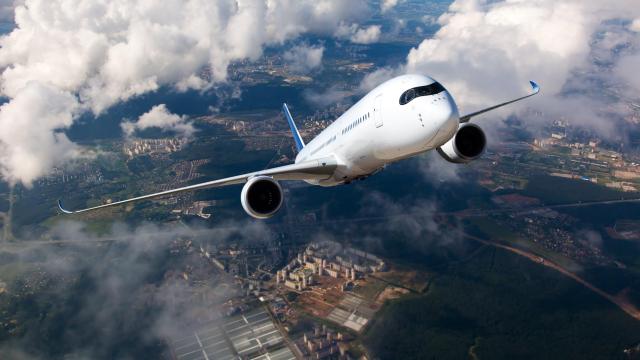Easily qualifying as the worst thing I’ve read all week, a terrifying new report from the New York Times claims that “near collision” episodes involving commercial airlines are a weekly occurrence in America.
The Times report draws on extensive records sourced from the Federal Aviation Administration, as well as a little-known NASA database that holds “safety reports” filed by pilots and air traffic controllers. Altogether, the documents reveal that planes from “all major U.S. airlines” suffer “near misses”—they almost crash into each other—pretty much all the fucking time.
The Times analysis shows that such “close calls” are happening multiple times a week—and that there were 46 such incidents reported last month alone. During the most recent 12-month period where data was available, reporters found that there were roughly 300 reported “near collision” incidents involving major airlines, some of which avoided disaster only via last-second maneuvering.
The concrete details of some of these incidents are laid bare in the Times reporting—and are probably enough to make some readers swear off air travel for the rest of their natural lives. A vast majority of the incidents are said to be the result of pilot or air traffic controller error, and many of them happen in and around airports during take-off or landing, the Times reports.
In one incident that recently occurred in Fort Lauderdale, Florida, an air traffic controller accidentally cleared a Delta jet to approach the airport for landing, which put it on a collision course with a Spirit Airlines flight that had also been cleared to land. In another incident at New Orleans International Airport, an incoming Southwest flight nearly collided with a Delta flight that was in the process of taking off. The stories go on and on.
The Times calls this whole mess an “alarming pattern of safety lapses and near misses” and says that dangerous incidents are being reported with more and more frequency at U.S. airports. That said, it’s not clear whether dangerous incidents are happening more frequently or whether reporting of the incidents has gone up. Still, the reporting suggests that a major culprit behind this trend is a “chronic” understaffing of air traffic control towers. This has been a well-known problem in the commercial aviation world for quite some time. Common wisdom suggests that the pandemic hit the air travel industry particularly hard and that air traffic control staffing levels were reduced during that period and never fully recovered. Now, despite recent FAA efforts to re-staff, things are looking pretty hairy. The newspaper states:
As of May, only three of the 313 air traffic facilities nationwide had enough controllers to meet targets set by the FAA and the union representing controllers, the Times found. Many controllers are required to work six-day weeks and a schedule so fatiguing that multiple federal agencies have warned that it can impede controllers’ abilities to do their jobs properly.
Air traffic controllers are apparently so disturbed by this situation that they have begun writing letters to the FAA in a desperate plea for additional manpower and resources. One such letter, revealed in the report, says: “The staffing shortage is beyond unsustainable. It has now moved into a phase of JUST PLAIN DANGEROUS…Controllers are making mistakes left and right. Fatigue is extreme…The margin for safety has eroded tenfold. Morale is rock bottom. I catch myself taking risks and shortcuts I normally would never take.”
